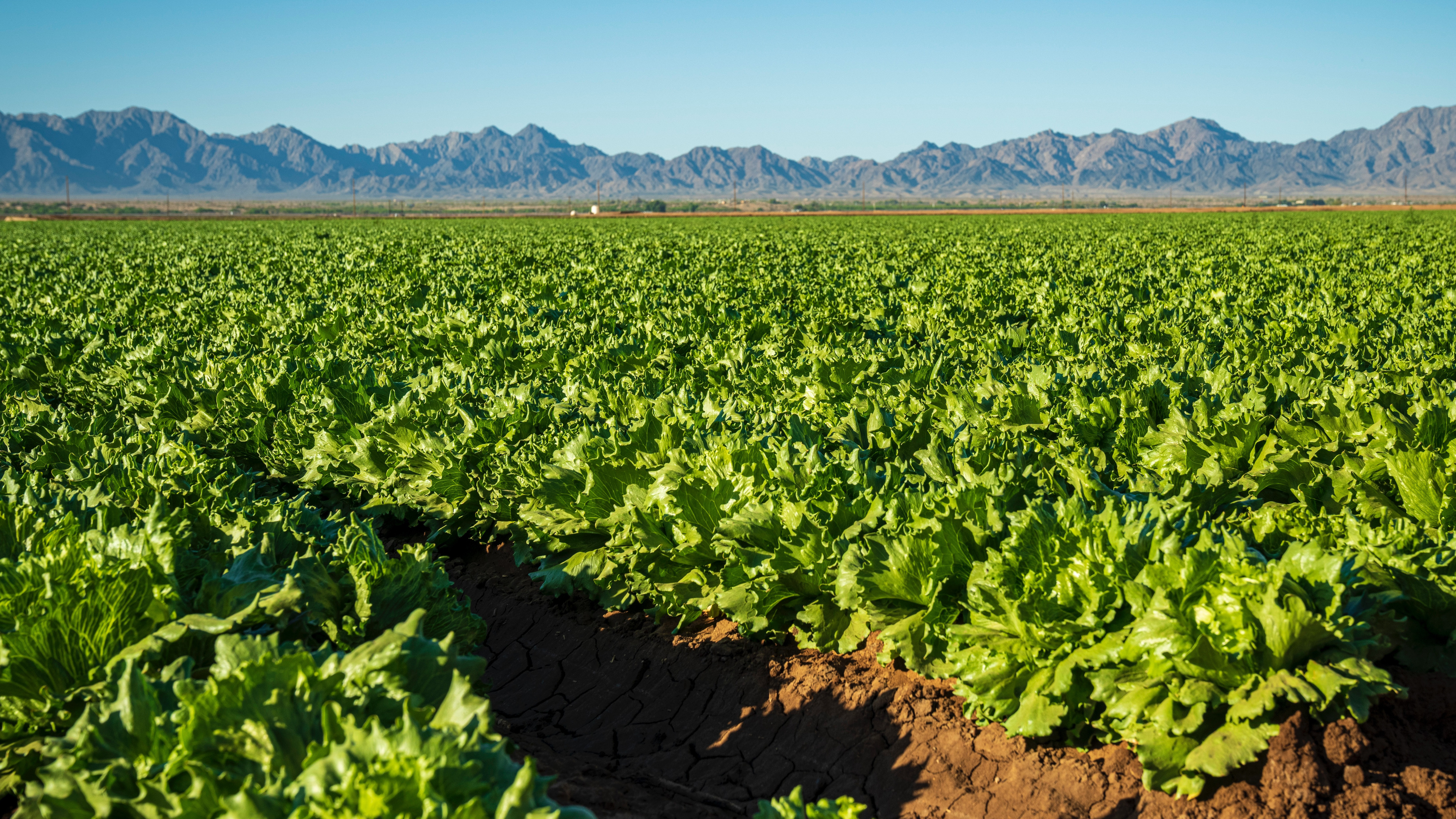
Fast Facts About Agriculture & Food

1.9 million farms dot America’s rural landscape, and 95% are operated by families – individuals, family partnerships or family corporations (USDA Census of Agriculture, 2022).
Family farms and ranches account for 90% of total agricultural production value.
Farmers and ranchers receive only 15 cents (on average) out of every retail dollar spent on food at home and away from home. The rest goes for costs beyond the farm gate: wages and materials for production, processing, marketing, transportation and distribution.
30% of all farmers are beginning farmers (in business less than 10 years); their average age is 47.
9% of U.S. farmers are serving or have served in the military.
Americans enjoy a food supply that is abundant, affordable and among the world’s safest, thanks in large part to the efficiency and productivity of America’s farm and ranch families.
One acre of land can grow a variety of crops, including 50,000 pounds of strawberries or 2,784 pounds (46.4 bushels) of wheat.
One day’s production for a high-producing dairy cow yields 4.8 pounds of butter, 8.7 gallons of ice cream or 10.5 pounds of cheese.
On any given day, one in eight Americans will eat pizza.
Farm and ranch families comprise less than 2% of the U.S. population.
Total U.S. corn yield (tons per acre) has increased more than 360% since 1950.
Of the 11% of disposable income Americans spend on food each year, the dollars are split fairly evenly between food eaten at home and dining out, takeout or delivery.
Many Americans celebrate holidays with food, spending a total of nearly $14 billion each year.
On average, one U.S. farm feeds 169 people annually in the U.S. and abroad. The global population is expected to increase by 1.8 billion by 2050, which means the world’s farmers will have to increase total annual grain production by almost 1 billion tons and total meat production by more than 200 million tons.
Cattle and calves, corn, and soybeans are the top three U.S. farm products.
Farming accounts for about 1% of the U.S. gross domestic product.
In 2023, $174.9 billion worth of American agricultural products were exported around the world.
About 6% of U.S. farms market foods locally through direct-to-consumer sales.
The pounds of feed (grain, forage, etc.) a dairy cow needs to eat to produce 100 pounds of milk has decreased by more than 40% on average in the last 40 years.
Farm programs typically cost each American just pennies per meal and account for less than one-half of 1% of the total U.S. budget.
More than half of America’s farmers intentionally provide habitat for wildlife. These efforts have contributed to population increases in native wildlife such as deer, moose and certain species of birds.
Careful stewardship by America’s food producers has spurred a 34% decline in erosion of cropland by wind and water since 1982.
Farmers are embracing and growing renewable energy. In 2022, a total of 153,101 farms and ranches used renewable energy producing systems compared to 57,299 in 2012, a 167% increase over 10 years. On farm renewable energy systems include geothermal, solar panels, windmills, hydro systems and methane digesters.
Americans throw away about 25% of the food they purchase for at-home consumption.
A whopping 40% of all food grown and produced in the U.S. is never eaten.
About 20% of U.S. farm products by value are exported each year.
Women make up 36% of the total number of U.S. farm operators; 58% of all farms have at least one female decision-maker.
Information on this page may be shared via social media, etc. Sources include the American Farm Bureau Foundation for Agriculture and the USDA Census of Agriculture. Visit AgFoundation.org for additional information and resources.
Top Issues
VIEW ALL